|
U.S. Naval Aviation In the South Pacific during WW II Featuring the Lexington Aircraft Carrier The Battle of the Marianas — June 1944 Chapter 1 Page 7 of 7 Pages |
|||||||||||||||||
| June 21: This morning a destroyer picked up a pilot named Warren E. McLellan, whose experience was certainly one of the strangest as well as one of the most valuable of the whole war. Piloting one of our torpedo bombers, McLellan found his plane, hit by Japanese antiaircraft fire, on fire about 5,000 feet above the target. He and his crewmen bailed out and floated down safely through the hail of fire, presumably because the Japanese gunners were too busy with our other planes to bother with them. McLellan hit the water in the midst of the enemy fleet. From his point of vantage he was in a position to ascertain exactly what damage our bombers had done. McLellan and his crewmen watched Japanese rescue boats scour the sea by searchlight for survivors. When the fleet moved on he as attacked by sharks which he clubbed with his shoes. Today a search plane dropped him a raft, and finally, 14 hours after his jump, a destroyer picked him up. |
|||||||||||||||||
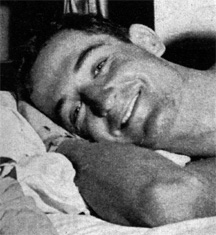 |
|||||||||||||||||
|
Ctsy: Life Mag., dated 6/17/44 |
|||||||||||||||||
| McLellan’s story, as told to Admiral Mitscher, would certainly in terms of journalism justify several dozen Pulitzer prizes. Its military significance was that he had seen one Japanese carrier blow up and two others burning brightly, listing badly and apparently about to sink. After delivering it, in quiet monosyllables prompted by sympathetic questions from Mitscher, McLellan seemed a little weary and the ship’s surgeon sent him down to sick bay. |
|||||||||||||||||
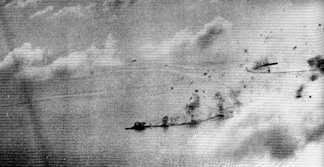 |
|||||||||||||||||
|
Ctsy: Life Mag., dated 6/17/44. |
|||||||||||||||||
| June 22: As a naval victory, the Marianas fight seems to belong somewhat in a class with Jutland. Yesterday, at dawn, we launched one more strike at the Japanese fleet but — because we had to head east into the wind for two hours to land planes the night before — they were out of reach. When last seen, the Japanese fleet was headed back, not southwest where it had come from, but northwest toward Japan itself. Chances are that it will never emerge again as a fighting force in this war; its absence from the South Pacific will give General MacArthur a clear field there. |
|||||||||||||||||
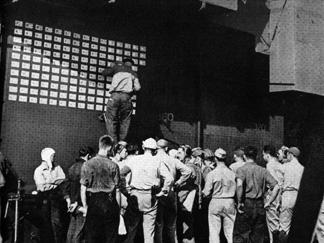 |
|||||||||||||||||
|
Ctsy: Life Mag., dated 6/17/44 |
|||||||||||||||||
| Furthermore, although a major surface battle failed to materialize, what action did materialize was entirely one-sided, the final score being 428 Japanese planes lost against 122 of ours, and two Japanese carriers, a destroyer and three tankers sunk against none of ours. Meanwhile, the original objective of a landing at Saipan was attained. |
|||||||||||||||||
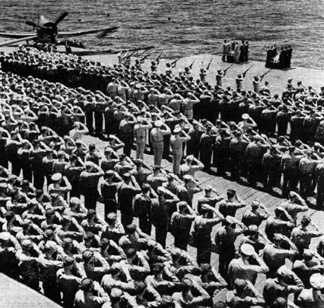 |
This afternoon, burial services were held for the two men killed in the night-landing crash. On the empty flight deck, target of so many Japanese bombers, scene of so many daring departures and hairbreadth returns in the last few days, the entire ship’s company lined up. The small, quiet bodies of the two men, wrapped in flags, were brought up to its level on the huge, high-speed elevator. The bugler who sounds reveille through an amplifying system stood out in the open to blow taps. The bodies slid into the sea. | ||||||||||||||||
|
|
|||||||||||||||||
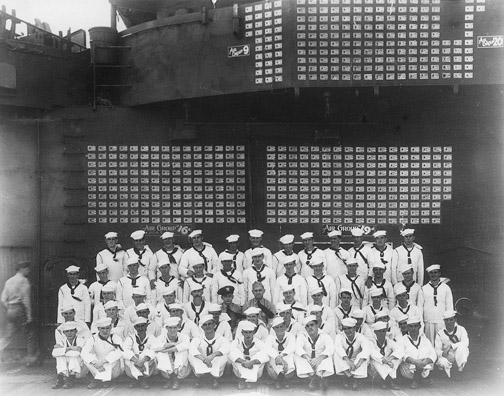 |
|||||||||||||||||
|
USS Lexington |
|||||||||||||||||
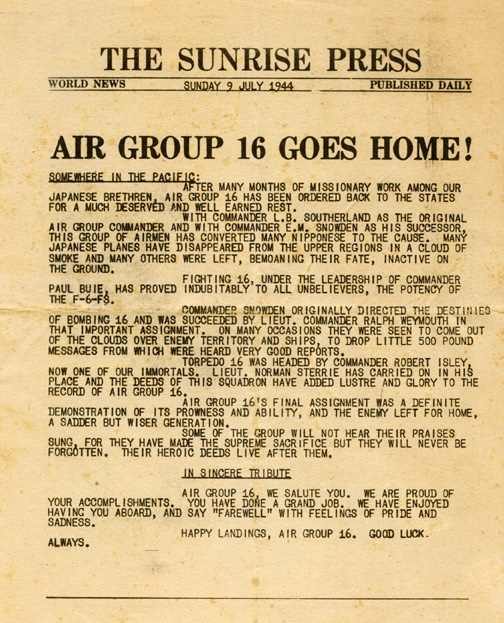 |
|||||||||||||||||
|
|
|||||||||||||||||
|
Page —1 — 2 — 3 — 4 — 5 — 6 — 7 Or This Story’s Cover Page — Editor’s Introduction — Table of Contents Fred Gwynn’s “Torpedo 16” — Chapter — 1 — 2 — 3 — 4 Or Home - Contact Us - Cold War Hist. - 91st SRS Hist. - Stardust 40 Mission Story |
|||||||||||||||||